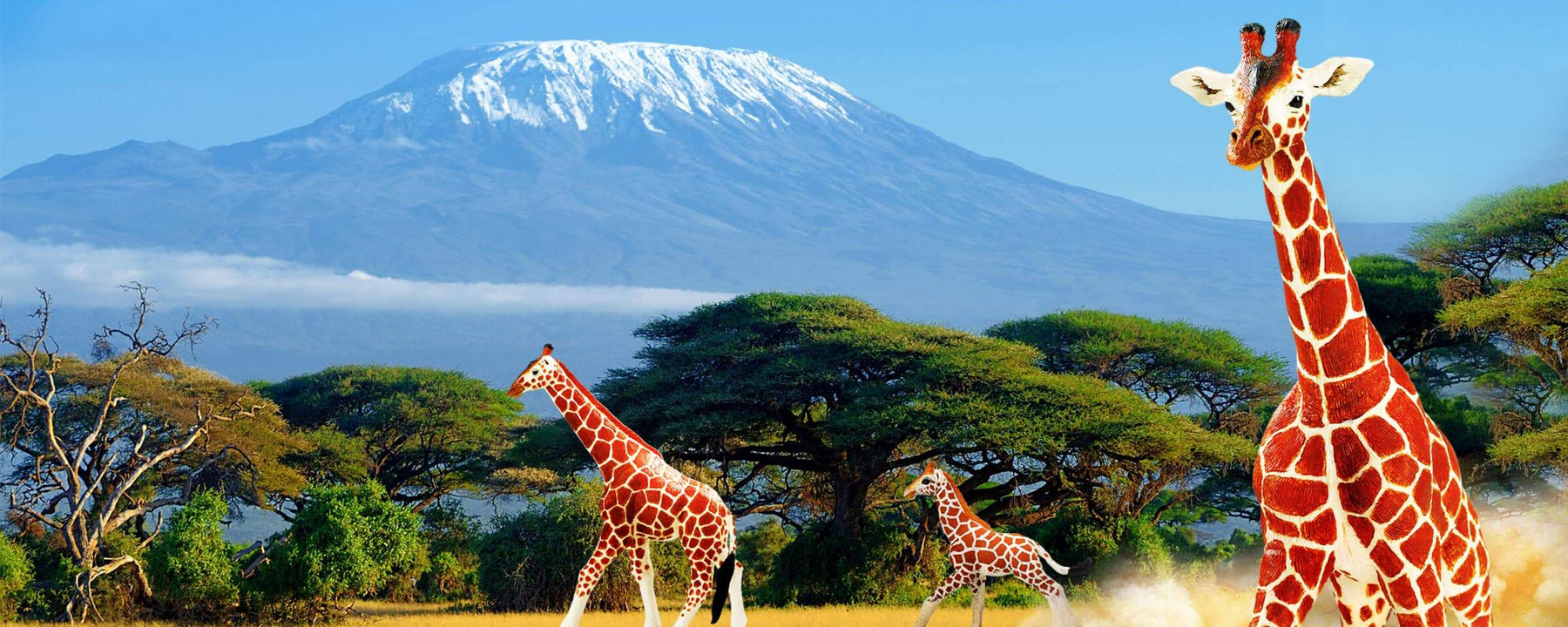
Stick Your Neck Out for World Giraffe Day!

It’s World Giraffe Day! On this day, designated by the Giraffe Conservation Foundation, we celebrate these unusual animals to raise awareness and hopefully ensure that they’ll be around for future generations to enjoy. Why June 21st? Well, giraffes have the longest neck of any animal, so it only makes sense to celebrate these magnificent mammals on the longest day of the year (or night, depending on which hemisphere you live in).
What is a giraffe, anyway? Well, as we already said, it’s a mammal. But more specifically, it’s what is known as an “even-toed ungulate” which places it in the order Artiodactyla. This group also includes hippos, camels, cows, deer, antelopes and, most surprisingly, whales. The giraffe’s closest living relative is the okapi, which is the only other modern animal in the family Giraffidae. These animals share certain characteristics, including short horns covered in skin, long legs, very long tongues, and long necks.

Of course, while the okapi has a long neck relative to most other mammals, it can’t compare to that of its cousin. As we’ve mentioned, giraffes have the longest necks in the animal kingdom, and these necks help them claim the title of tallest land animal. The tallest giraffe ever known was almost 20 feet tall, and the neck of a giraffe can reach nearly eight feet long. There are a few theories regarding just why giraffes have such long necks. For a long time, it was believed that it gave them an advantage over other plant-eating animals by allowing them to reach higher vegetation. However, other ideas have been proposed recently, including that it may have developed to give the giraffe a better vantage point to see predators.

While a giraffe’s neck may be long, it’s not as flexible as you might think. In fact, despite its length, a giraffe only has seven vertebrae in its neck, which is the same number of neck bones that humans have! In addition to feeding on high tree branches, giraffes also use their neck for a behavior called “necking”. This is when two male giraffes do battle for the affection of females during mating season. They will swing their necks at each other, hoping to land a blow with the horns on their heads.

In the wild, giraffes are more than capable of spotting predators with their keen eyesight, and their size and powerful legs keep them protected from all but the bravest lions. The young, however, must be careful to watch out for leopards, hyenas, and wild dogs. However, humanity poses the biggest threat to the continued existence of the giraffe. Though giraffes are protected from hunting, habitat loss due to deforestation is reducing their range, and it is already extinct in many countries where the species once thrived.

Giraffes are listed as “vulnerable”, and two subspecies are currently endangered, with only a few hundred of each left in the wild. In total, giraffes number less than 100,000 individuals, and the population has dropped by 40% in the past 30 years. But it’s not too late to turn it around. The Giraffe Conservation Foundation (GCF) has a wide range of dedicated programs focused on protecting giraffes throughout Africa, including partnering with other conservation organizations and lobbying governments to increase their protective efforts. If we can stick our necks out to help the giraffe, we can ensure that their necks are protected for years to come.
Bernie’s Bonus Fun Fact: Giraffes get most of their water from the plants they eat, so they rarely need to drink. This is because drinking water requires them to splay their forelegs and bend their neck low to the ground, which can leave them momentarily vulnerable to predators.

 Facebook
Facebook
 Twitter
Twitter
 Instagram
Instagram
